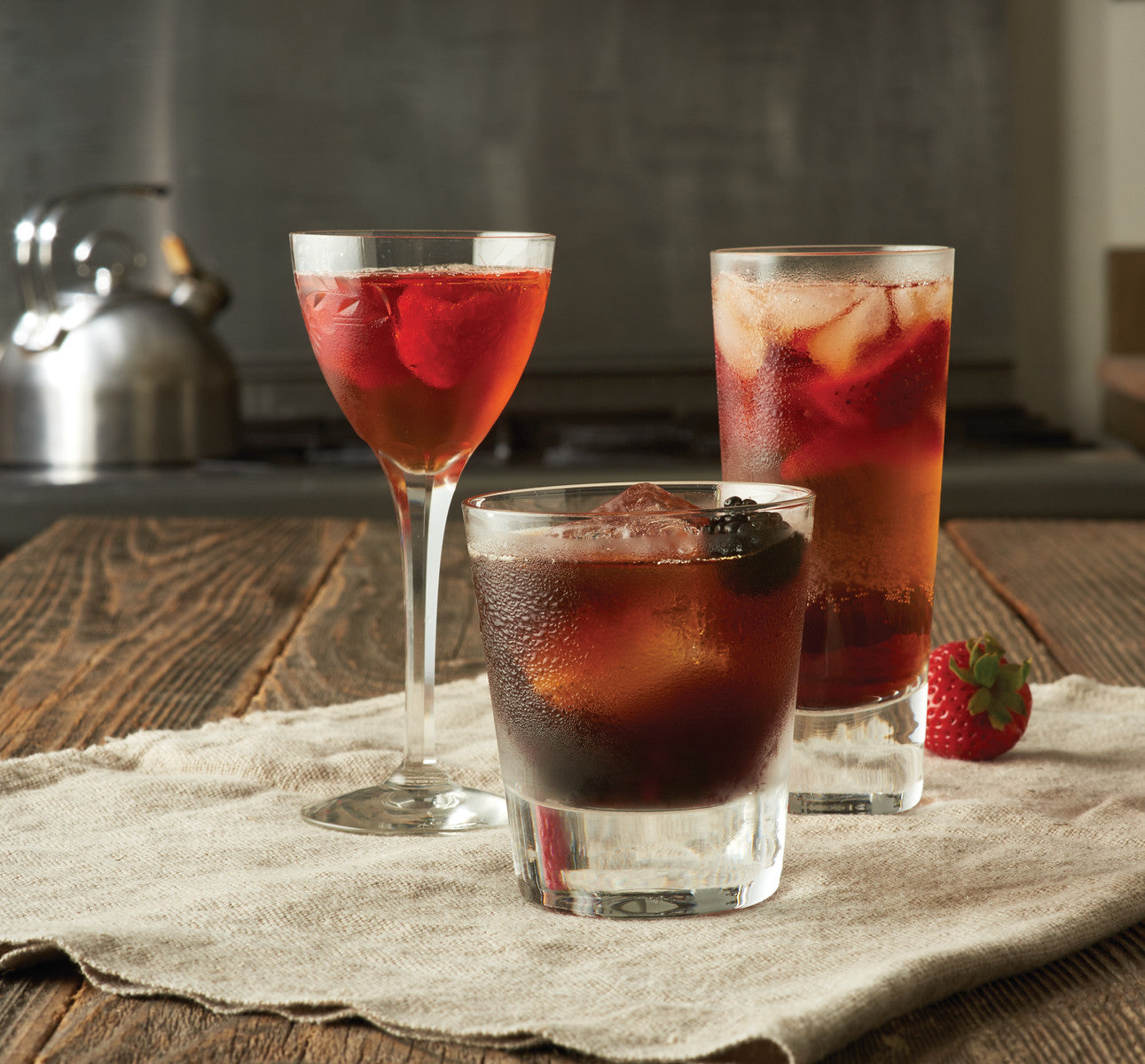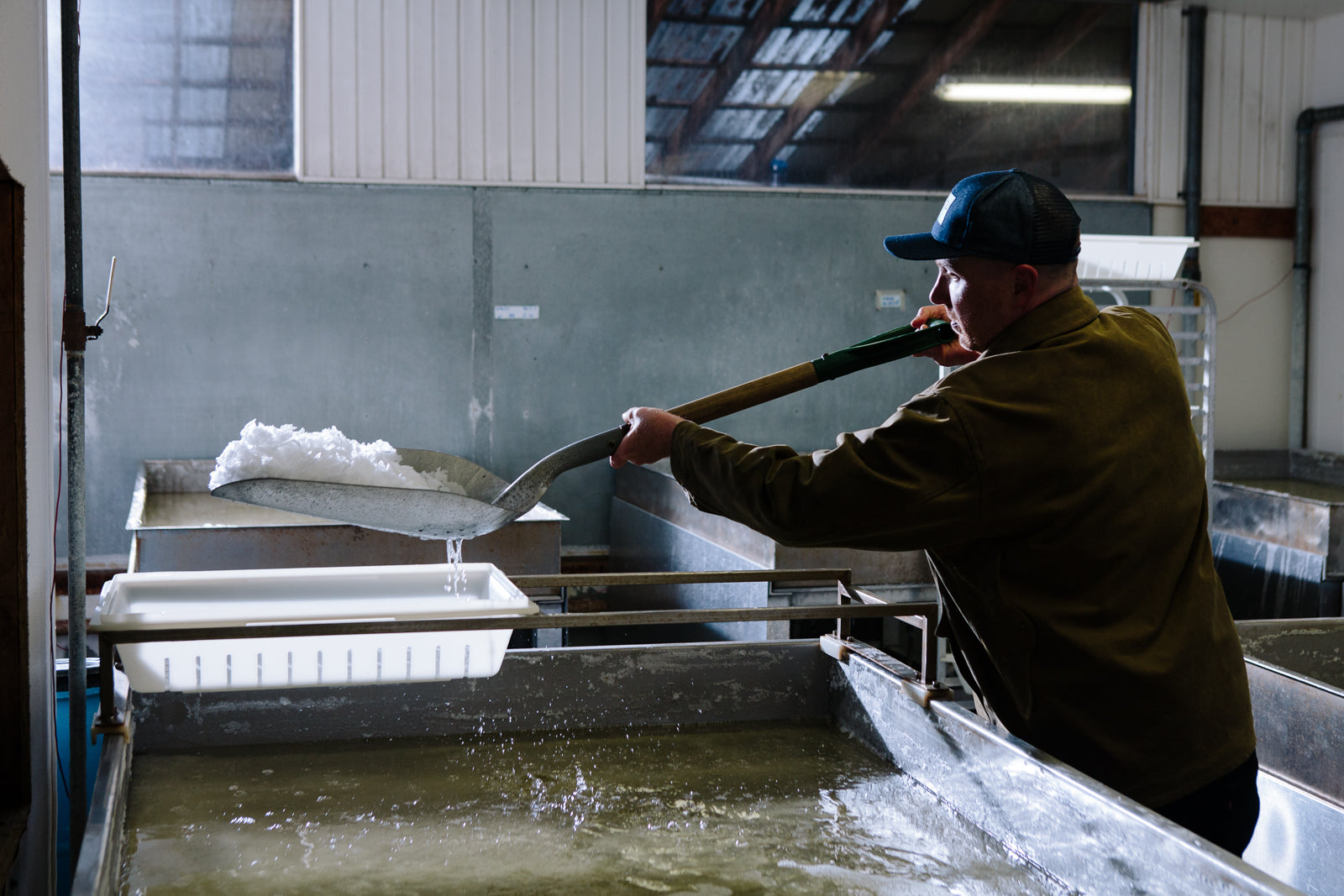
Balsamic Vinegar Cocktails, Preliminary Thoughts
My Introduction to Balsamic Vinegar Cocktails
Several years ago, our friends Karl and Karin made a series of bourbon based cocktails using balsamic vinegars and it got us thinking about the well stocked bar and ideas for entertaining. The collection of drinks depicted here were developed and photographed by them at their San Francisco pied-à-terre for our Holiday 2015 catalog, and we were charmed by their invention.Today I’m posting preliminary thoughts on the use of balsamic vinegar as an ingredient in beverages because customer Sue S. made a kind inquiry yesterday regarding our suggestion for use in “cool drinks” as noted in the copy for Bianco Balsamic Vinegar, and I had personally never made such a concoction. I’ve never tended bar, I’m not a mixologist, and such matters are outside of our raison d’être as an olive oil company, however, balsamic vinegar is important to many of you, and I am eager to embrace the challenge.
Understanding techniques are ultimately more important than recipes. This was the core principle of the HomeChef Cooking School where I worked with founder Judith Ets-Hokin in the 1990s. As a cook, it is more important to understand why and how something works, because once you do you are liberated from recipes are truly free to experiment in the kitchen with confidence. If you read Jacques Pépin you know recipes are mere guidelines anyway.
Information and Inspiration
Here are a few morsels of information collected to inform and inspire us about using balsamic vinegar in mixing both alcoholic and non-alcoholic drinks. This is a starting place for us to explore together; I hope readers will share their experiences in the comments or via email so we can expand our knowledge together and perhaps post again at the end of summer with our summer successes and then build a point of view about the fall and holiday season, too. I’d like that.Urban Drinks in the UK helped me think about mixing drinks as a formula, writing that components should include a base comprised of a single spirit; a modifier, such as a fruit juice or cream to soften the edges of the alcohol; and a special ingredient for flavoring or color, such as bitters or syrups. Furthermore, their recommended ratio for a balanced cocktail is
- 3 or 4 parts spirits
- 2 parts bitter or sour
- 1 part sweet
Difford’s Guide, interestingly also from the UK, was immensely helpful with their essay “Vinegar & Vinegar in Cocktails” from 2011, and I recommend reading it as a solid grounding as you begin to experiment. Difford’s notes that acidity is critical in lending balance to mixed drinks, and opined that too often we’ve relied on citric acid (lemon or lime juice), when malic, tartaric, lactic, or acetic acid would also add complexity. That last one—acetic acid—is what is found in balsamic vinegar.
The article further recounts that renown mixologist Kelley Slagle and winemaker/distiller Karl duHoffman have explored the use of vinegar in mixology and have concluded as a general rule that only a third of the volume of vinegar is needed versus citric acid when mixing because acetic acid is three times more powerful in terms of perceived acidity on the palate. As Kelley relates, “Without acidity you have flabby drinks—you need a ‘backbone’…vinegar doesn’t get a lot of respect. It’s actually a fun and delicious way to add to mixed drinks”.
Brass Tacks
Let’s get practical and return to the notion of 3 or 4 parts spirits to 2 parts bitter or sour to 1 part sweet. We already know that the bitter/sour ratio likely assumes citrus, not vinegar, so we need to reduce vinegar, and we also know that balsamic vinegars are on the sweet end of the vinegar spectrum, so we’ll need to taste and adjust, and taste again until we’re satisfied with the balance.
Using the expert information noted above plus what I have on hand today I muddled ¼ cup fresh blueberries with ¼ cup Bianco Balsamic Vinegar and then mixed in 1 cup unflavored La Croix® sparkling water as a starting point.
The overall impression of the beverage was a mild blueberry aroma, typical drinking vinegar acidity (if you enjoy drinking ACV for health, you’ll know what I mean) with a lot more sweetness. It was refreshing, but—to me—lacked complexity and for my taste was too sweet, so I would recommend a more fragrant fruit or the use of a flavored LaCroix® sparkling water or both, and either a reduction in volume of vinegar used or an increase in the sparkling water. Certainly, sparkling wine would have made this more interesting and complex (but would have increased sugar, too). Finally, what this beverage really needed was ice, which I did not have on hand.
I imagine once we all start experimenting we could come up with delicious, refreshing, and well-balanced ideas. Would Rosato Balsamic Vinegar pair with Hendrick’s® Rose and Cucumber Gin--or not? Would a flavored vinegar perhaps complement a brut or extra brut sparkling wine? What else would need to be added for balance?
A note of caution about sugar
If you are minding your sugar intake please be aware that my experiment using a ¼ cup of Bianco Balsamic Vinegar had a sugar content close to that of Coca-Cola® if consumed as a single serving. (Coke® is 8.3% sweeter by volume, but still…). The vinegars we offer have no sugar added, however, you are still consuming highly concentrated grape juice which has been fermented. Bianco has 9 grams of sugar per tablespoon. ¼ cup = 4 tablespoons, thus 36 grams of sugar for what amounted to a 10 oz serving. Coke® has 39 grams of sugar in a 12 oz serving. I will be changing the vinegar:water or vinegar:alcohol ratios in future to reduce total sugars, and enjoying the drink with ice will certainly dilute and reduce the over all serving size, too.
Since we are on the topic of cautions, I personally recommend you enjoy these sorts of beverages with a straw. Beverages high in sugar and acid are very hard on tooth enamel.
Thus endeth the lesson. Enjoy your libation explorations in good health! I'll post about the subject again later in the year. - Liz





